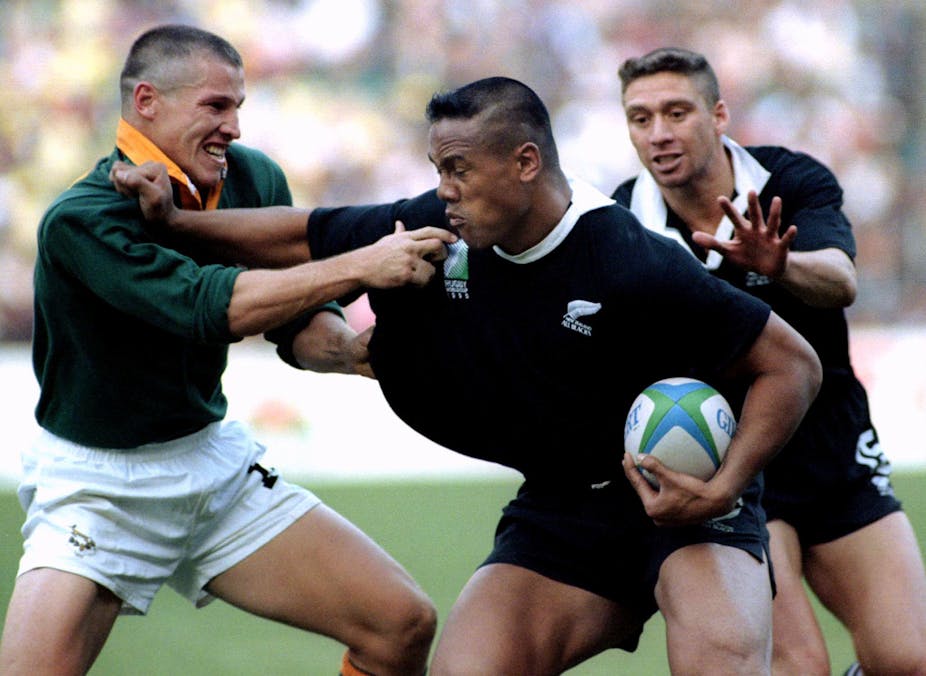The death of Jonah Lomu at the tender age of 40 comes as a great shock. The tributes have poured in, and will keep flowing. He has been described as a legend, a hero and a gentleman, and no doubt he will go down as such in the history of rugby.
Certainly there is a genuine case to say that he changed the game of rugby in a significant way. Before him wingers were slight, nippy and agile who used guile and speed to exploit the open spaces to score tries. Gerald Davies was a master at avoiding the opposition, using a range of delicate skills. But Lomu could cover 100m in under 11 seconds and at 6’5" and 19 stone he didn’t go round the opposition: he went through or over them.
At the age of 20, he was unstoppable. He burst onto the rugby landscape in the 1995 South Africa World Cup. With a stature more suited to a role in the pack, he changed rugby’s view of wingers and paved the way for players such as George North to pursue a similar career.
Despite the power and pace, or perhaps because of it, there was an aesthetic appeal to his play. He was a beautiful runner and when he received the ball both the crowd and opposition held their breath. It was like watching a school match where the big kid in the class swatted his smaller opponents out of the way effortlessly.
The beauty of sport is that there is always something new. The aim is to find new and different ways to outdo the opposition, to overcome unnecessary obstacles, to meet the test on offer. Lomu seemed to thrive on testing himself by running directly at the opposition, a personal challenge of his own physicality and prowess. His on field brilliance made him a global superstar and a role model.
But the burden of being a role model does not always sit comfortably with sport superstars and there are many who have suffered as a result of being thrust into the limelight at such a young age. In some cases, problems are self-inflicted and many a promising youngster doesn’t go on to have a career to match the talent and potential.

But Lomu’s career and eventually his life were cut short by a rare kidney disease, nephrotic syndrome, over which he had no control. He called time on his professional career in 2002 and underwent a kidney transplant in 2004.
Despite this, he approached the disease and his life with courage and determination. He continued to play, he turned his hand to other challenges, he raised money and he tried to live life to the full despite the constraints of the treatment he had to endure. He had a strong faith in God and was not afraid to hide his beliefs.
There are countless memorable moments from his rugby career, the bulk of which entail watching a huge, unstoppable force bursting through tackles. His character off the field, at least from an outsider’s perspective, reinforces my belief that athletes can be good role models and not just because of their athletic excellence. Despite their physical abilities, they are human beings who are vulnerable to illness, disease and disability. They are also vulnerable to the fear, anxiety and emotional pain that come in life.
His death, just weeks after the All Blacks – the team he had done so much to inspire – won their third World Cup, will be cause for national mourning. But Lomu dealt with his difficulties and his achievements in much the same way, to paraphrase Kipling, by treating those two impostors just the same: with humility and courage.

